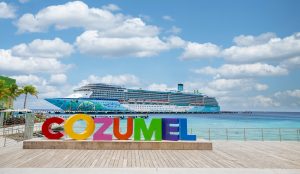Once you’ve determined you want to sell, valuing your business is the next step in the process.
Here are a few simple formulas for small to mid-size companies who want to sell:
Buyers will look at valuing the company a few ways. One is based on the seller’s discretionary cash flow (SDC) and the other is what’s left after paying all expenses or the EBITDA, which is Earnings Before Interest, Taxes, Depreciation and Amortization. In both of these examples, the calculation is done by recasting the income statement. The SDC figure includes the current owner’s salary. To determine the cash flow in either method, you can recast the last 12 months’ Income Statement or P & L.
In the examples below, the income statement and tax return may show $100K in earnings, but there is a true SDC or EBITDA to be determined via recasting the income statements, etc.
SDC Example: A company produces $500,000 in gross profit with $25,000 in net profit. The owner’s salary is $75,000. Outside of the true fixed business costs, all excess owners’ discretionary spending or expenses are then itemized. This includes excess rent, 401K, car, cell phone, gas, meals and entertainment, non-working family member, etc. For this example, those expense items, or addbacks, amount to $25,000. You add the $25,000 net profit, the $75,000 salary plus the addbacks of $25,000 for a true SDC, which is $125,000. We are seeing multiples of two times the SDC on average. The valuation is $250,000. We don’t set the market, but this is around what we are seeing buyers and sellers agreeing to.
Related: The Value of Publicity in Growing Your Tour Business (leisuregrouptravel.com)
EBITDA Example: A company produces $500,000 in gross profit with $25,000 in net profit. The owner’s salary is $75,000. Outside of the fixed costs, the addbacks amount to $25,000. The owner feels their position is really a $50,000 per year job and/or they stay on post sale for that. This is a savings of $25,000. You also add back any interest, taxes, depreciation and amortization, e.g. $15,000. The total EBITDA “net profit, addback savings etc.” is $90,000. We are seeing three times as the multiple on this size of cash flow. The valuation here is $270,000. Obviously, there are many moving parts and things to consider, each business will be different and have many things to be factored in. This should help you with a rough idea as to the process of determining your value. In both examples, there may be other extraordinary expenses that could get counted as addbacks as well.
Here are 10 Tips for Sellers:
- Never limit your buying pool in any way.
- Do not attempt to do it yourself.
- Do not sign long-term contracts of any type just before closing.
- Do not give up client list prior to closing.
- Do not become emotional, cool is a rule.
- Do not tell anyone else you are considering a sale.
- You need to have a reality-based asking
price. - Start the process 18 months prior to when you wish to walk away and stay on one year after the sale minimum.
- Have your financial records in order.
- The risk for selling too soon pales in comparison to the risk of selling too late.
 By Bob Sweeney and Doug Haugen
By Bob Sweeney and Doug Haugen
Bob Sweeney spent the 1980s working as an institutional broker for Oppenheimer and Shearson Lehman. In 1991, he founded ITA, now known as the Matchmakers of Tour and Travel industries. Together, Bob and Doug have overseen 645
Doug Haugen has been successfully linking buyers and sellers since 1998. He has enjoyed helping clients of small and large travel companies to sell their business.







